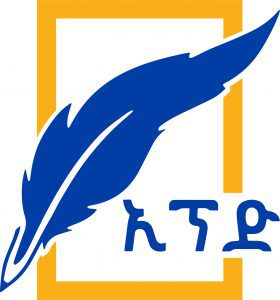
According to recent reports, the online market in African art is increasingly attracting the growing attention of genuine art lovers as well as shady art dealers and consumers worldwide and this has created lucrative opportunities for the art market to resort to legal and illegal channels to acquire Africa’s rare artistic objects while museums and art collectors are losing to the art predators who are out to destroy the continent’s historic art relics while lining their pockets with ill-gotten bounties.
To begin with, what is African art? Answering this question will certainly establish the factor or factors that determine the high market value of African art in the contemporary global on line market in particular. According to one explanation, “What is considered African art is the visual arts of native Africa, particularly sub-Saharan Africa, including such media as sculpture, painting, pottery, rock art, textiles, masks, personal decoration and jewelry.”
According to another opinion, or definition, black African art refers to, “the visual art created by people of African descent, primarily those who are form or have ancestral ties to the African continent. This type of art encompasses a wide range of styles, materials, and techniques reflecting the diversity of the African continent and its Diaspora.”
Why is African art has now become so expensive or valuable? In other words, what is the most important factor that determines African arts value in the global market? According to one view, “The rarity and desirability of African artifacts have significant impact on their market value. According to art advisors, the rarity of an object is generally the most important crucial factor in determining its value. A rare piece of African art is more likely to retain its market value or even be appreciated over time.”
The uniqueness of African art is also another dimension that contributes to its high value. “What makes African art unique? The art is a special representation of nature and its various forms. It also focused on being abstract rather than realistic. A lot of various complex methods interpreted animals, plants and even the divine.” No traditional life as other art celebrates the spiritual dimensions of African traditional life as do its celebrated masks. No culture has dealt with the spiritual realm of African spiritual being as much as African art that represents the inner dimension of African people as traditional abstract art has done.
The above is a general definition of how the market values of arts are shaped. However, in the Western world, what determines the value of art is not necessarily its rarity but its departure from established norms of excellence or its capacity to break new territories in the quality of art production. Picasso has become the most important artist in the world not because his canvasses were rarities but because he invented a style of painting known as Cubism which is defined as, “a revolutionary new approach in representing reality and invented in around 1907-08 by artists Picasso and Braque.”
It may be useful to point here at Africa’s artistic influence in Europe in the period known as modernism with cubism at the center. According to the blog page called, “The Collector”, African art has inspired European cubism and not vice versa. In a recent article entitled “African Art: the First Form of Cubism”, the blog page carries the following tribute to African art with the following words. “Picasso and Braque may have pioneered one of the most radical avant-garde movements in Europe during the early 20th century. But African carvers were first to abstract reality.”
At the time of its invention, Cubism was not a rarity but a radical departure from the realism and expressionism or naturalism that prevailed in the art world before it. Picasso’s paintings subsequently became expensive simply because he had broken new grounds in modernism in painting.
On the other hand, the value of African art emanates, as we said above, from its unavailability elsewhere in the world, its uniqueness that is born of the continent’s collective material, religious, spiritual life and the symbolism it conveys to both the producers and the viewers. “For example in the art of the Yoruba people of Nigeria, the color blue often symbolizes wisdom, while red represents danger or evil spirits.”
Moreover, African art has a unique quality because of the central themes it deals with. “The themes of African paintings often revolve nature, animals and human life. These themes reflect the cultural and traditional beliefs of the African people and their close relationship with nature.”
In the case of African art, the value or price of artistic objects is determined by their rarity, i.e. the fact that they are not found elsewhere in the world. Their worth is subsequently greater than their use values or artistic qualities. An old piece of earthenware as artistic product may not be superior to a modern painting or object of art but its scarcity adds value to it.
In Europe there is a movement known as “Art for art’s sake” but in Africa, there has never been such a philosophy of art because there is no separation between art and society or between art and nature. Art has always been utilitarian in Africa either as a tool of self-understanding or a reflection of how Africans perceive their world. African art should rather be credited for putting art at the service of man since the earliest phases of human civilization.
According available data, contemporary African art market has become lucrative and booming thanks to advances in modern technology such as the internet and online marketing. Yet, what is now available in that market is only a small part of what Africans have produced as art objects in their long and tortuous history. An unknown amount of African art has been lost to looters and invaders during the centuries of European colonialism and the modern black market and art theft that has continued the European tradition of looting African artifacts.
According to available information, “A lot of African art was acquired for curious means by travelers, traders and missionaries in the century before and left the continent. Colonialists most often do not give indigenous art the attention it deserves and thereby African art history was not preserved or documented.” Although illegal acquisitions and theft in African art were rampant throughout the last few centuries, it is on the basis of available art legacy that modern African artists could preserve their legacies while bringing their own contributions to the growth and influence of African art in the contemporary world and the global demand in the marketplace that artistic objects are enjoying now. “”A steadily rising demand for works from African artists is drawing global audiences at major expos, auctions and fairs. According to the 2023 Africa Wealth Report, the continent’s fine art market was valued at just over 1.8 billion.”
This is a sure sign of the growth in demand for African arts and artifacts. Although it will never be possible to replace what was lost in the past, it is encouraging realize that new and upcoming young African writers are rising to the occasion by creating new works. The challenge ahead is certainly daunting because the African art market is only a tiny fraction of the global art transaction and the game of catch up is going to be tougher than any time so far.
The other challenge is the protection of African art from theft and contraband trade. This is particularly relevant to traditional African artistic products that are kept in museums in Europe. Many of them are stolen at one time or another by shady arts dealers who sell them to other museums or to individual collectors elsewhere int he world. They often steal them from Europe in order to sell them in America and vice versa. These ancient artifacts were stolen from Africa during the colonial era by the invading forces and taken to Europe.
Nowadays they are the valued prizes of predators in African relics. These precious artifacts will continue to make the tour of the world stolen at one time to be resold at higher prices. This is what makes the business in African traditional art so lucrative and the beneficiaries holding to these objects with greed and possessiveness as if they belonged to their ancestral families. The same fate is met by modern African art that is itself the heritage of old traditions and carry with them the artistic qualities of previous generations of African artists.
These precious objects of African art are kept in many places in Europe and prominent among them are those kept in France and Britain whose governments often promise to return them to their original owners but take many decades to live up to their pledges or simply forget to honor their pledges and the stolen artifacts never return to Africa or to their lawful owners. These matters are seldom vigorously followed up by the various advocacy groups and committee both within and outside the continent who are working for the return of the historic artifacts. In the meantime, some of them are stolen by online or traditional art dealers who are doing everything possible to maximize their profits withut consideration to the origins of these works of art. “Additionally as the art pieces were not seen as an accomplishment by the peoplewho created them, there was not much effort put into their conservation.”
Africans is not definitely benefiting from their own artistic heritages both as sources of their identity or as objects in the global art market. In between criminal groups deal with African artifacts and make a lot of money while Africans lose both the sources and symbols of their identity and their wealth as marketable properties. According to a recent study, “Research in North Africa found that online groups now play a vital role in antiquities trafficking.”
According to the same study, “Social media platforms, particularly Facebook, play host to these groups. Looters on the ground at remote sites and in conflict zones connect online with potential buyers around the world. The monitoring of thiscriminal activity is poor and antiquities crime isn’t a priority for those enforcing social media guidelines.” It may take a long and sustained struggle to prevent illegal dealers in African art products from dispossessing or abusing Africa’s irreplaceable artistic wealth. It is obviously up to African governments and cultural institutions within and outside the continent to reclaim Africa’s lost antiquities and return them to the legitimate owners as part and parcel of the struggle to restore Africa’s dignity and pride in its past achievements.
BY MULUGETA GUDETA
THE ETHIOPIAN HERALD SUNDAY EDITION 12 NOVEMBER 2023

